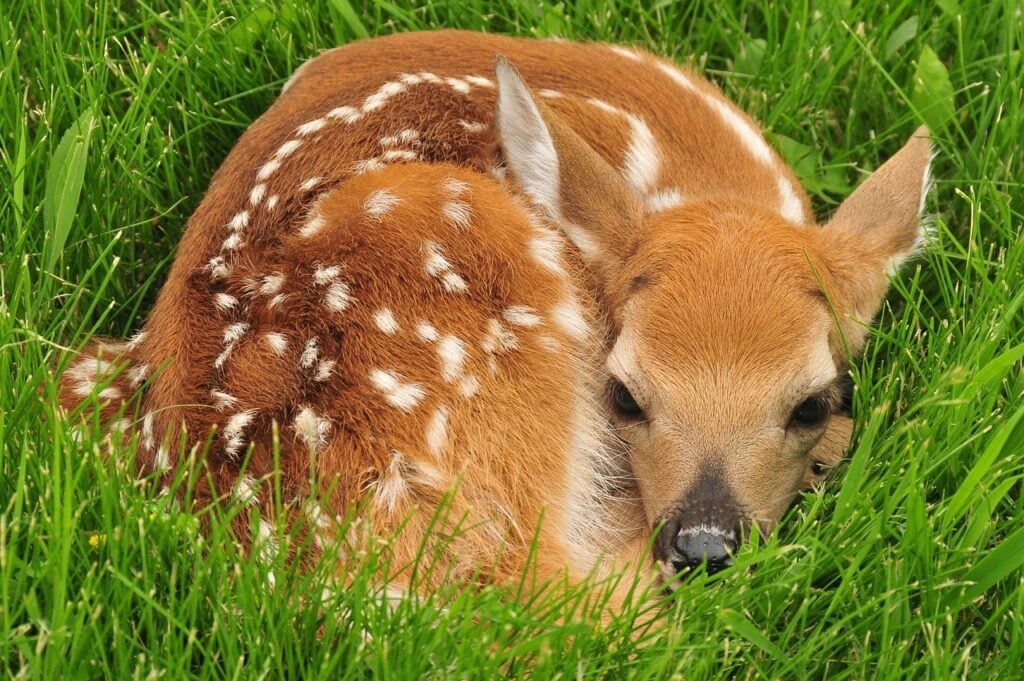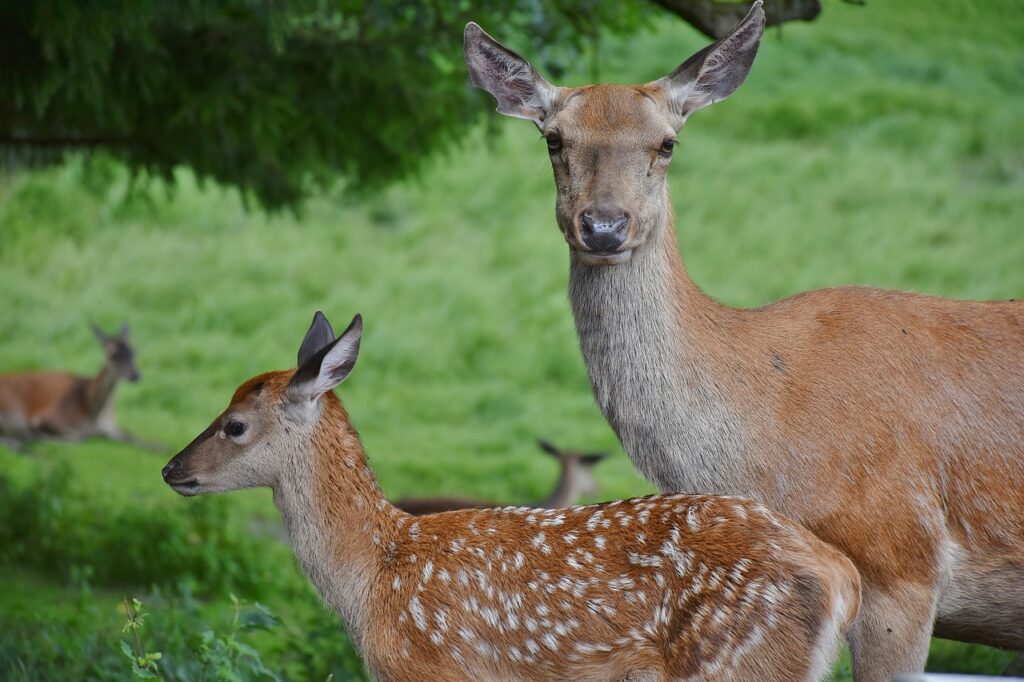Newborn deer fawns in the wild are a precious sight. Just don’t get too close or a mother deer attack could ruin your RV trip. Here’s how to keep you and your pets out of harms way.
That Adorable Deer Fawn is Not Abandoned
Deer fawns look so small and fragile. They are born in spring, which is when you are most likely to see one up close. Oftentimes you’ll see a baby deer curled up in a ball without a mother deer in sight. If you see a fawn all alone like this, don’t assume the mother rejected her offspring. Chances are, there is a doe hiding in the woods and she’s watching every move you make. Get too close and you are asking for a deer attack on you, or even your dog.
Deer attacks on humans are quite rare, but these docile looking creatures won’t hesitate to pull out all the stops to defend their young from intruders. Does are extremely protective during fawn season, which occurs between late April and July in North America.
When Deer Attack, There’s a Good Reason For It
Although deer mothers leave their fawns alone in the woods, they are not abandoning their offspring. Instead, the mother is using her instincts to protect her fawn from predators by “hiding” it. Then she waits nearby, watching until nobody is around. Occasionally she returns to feed or relocate the infant to another safe spot.
But if a camper or domestic animal gets too close to the fawn, a mother deer’s behavior can be unpredictable. Domestic pets, especially dogs, are often the victims of deer attacks as shown in the video below. The result can be fatal. Many campgrounds with heavy newborn fawn populations during spring, implement rules prohibiting dogs from certain trails. Campers are even banned from leash walking dogs in the actual campgrounds during fawn season.
How to Prevent a Deer Attack
If you see a fawn without a mother deer nearby, don’t panic. And whatever you do, don’t touch it. “Spring is when well-meaning people discover fawns alone, mistakenly believe they are in trouble and take unneeded action that may harm the animal,” explains a Wisconsin Department of Natural Resources Wildlife Biologist Dianne Robinson. “A fawn’s best chance for survival is with its mother.”
If you see a fawn in the wild, or even in your neighborhood at home, stop and ask yourself:
Is the fawn:
- Wandering or crying for more than an hour?
- Injured, infested with flies or maggots, bleeding, cold, or wet?
- Laying on its side?
If you answered no to all of these questions, DO NOT TOUCH IT. Leave the fawn alone.
However, if you find a dead adult deer nearby, or the fawn was placed in a dangerous location, put on an an odorless pair of medical gloves and move the fawn to a safer location. Just make sure the new spot is no more than 50 yards from where you found it. Next, call your nearest wildlife officials to report the encounter.



You know, this hit home. Since my daughter works at Yellowstone National Park. And has worked their for about six years. I hear first hand how folks act like fools around wildlife. From folks getting too close to new born bear cubs, deer fawns, bison calfs, and so on. To the Real IDIOTS, that actually thought it was too cold/hot, sunny/rainy, remote/busy for the young animal to survive. So they took it upon themselves to do something. And one actually loaded up a calf into their SUV, and took it to a Ranger station. This was Stupid on many levels. 1.) How would you feel if your kid was left at the play ground and you were nearby. And some fool loaded up your kid into an SUV? 2.) Many times young wildlife that are in direct contact with humans are rejected by their parents. 3.) You are causing tremendous stress to the young animal (Where is Mom?). 4.) You are Violating National Park rules to stay away from wildlife (Give them Space). 5.) The Ranger you take the Animal to will: Receive the Animal, and have a vet check it out to make sure it is unharmed by YOU. Ranger will next write up an incident Report. Write a Summons (Ticket) for you to appear in court, for violating NPS rules and regulations. You will be asked to immediately leave the park, for violating rules. If you paid for a Multi-day Pass, well that is gone too. Depending on the outcome of your case, you can be either banned entry from ALL Government lands from a period of Months, to Life. Depending on the outcome of your case. For example, the fool Scoutmaster that knocked over a “Balancing Rock” at a National Park. Is Banned for Life. So, don’t do it!! Unlike Helicopter Parents Nature and Wildlife know how to care for their young.
Many people have an aversion to common sense around wildlife.
As for having to show up in court, it will be in Federal Court, probably the closest to the Park the action occurred. You pay for your travel, hotel, meals, lawyer, etc. Don’t show up and US Marshalls will have a warrant for your arrest. If you are lucky, they will not arrest you at work, in front of family or friends. And the fines are pretty hefty. Transport an animal in your vehicle and the government can confiscate it,
Need more reasons to steer clear of helping wildlife? See an animal with a problem, contact the proper authority and let them handle it. They are equipped for that job.
Many people have an aversion to common sense period!
People need to be responsible for their dogs or they may have to pay a large vet bill or bury them